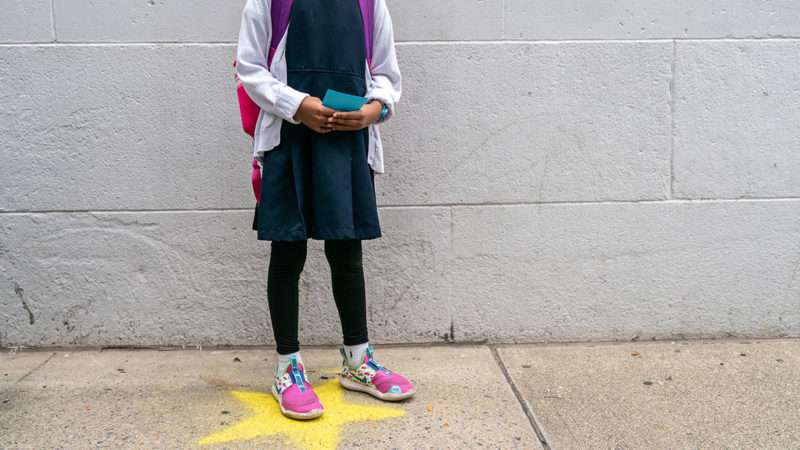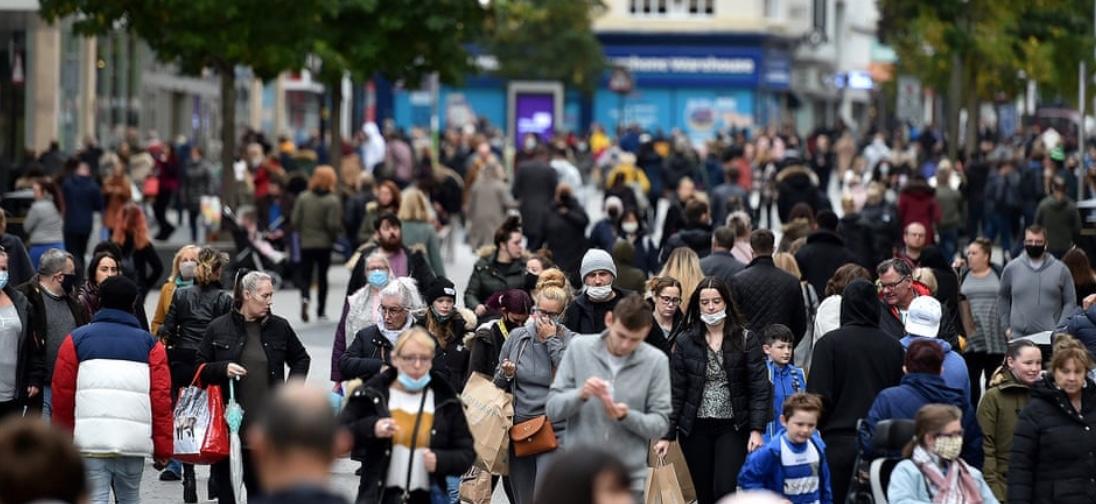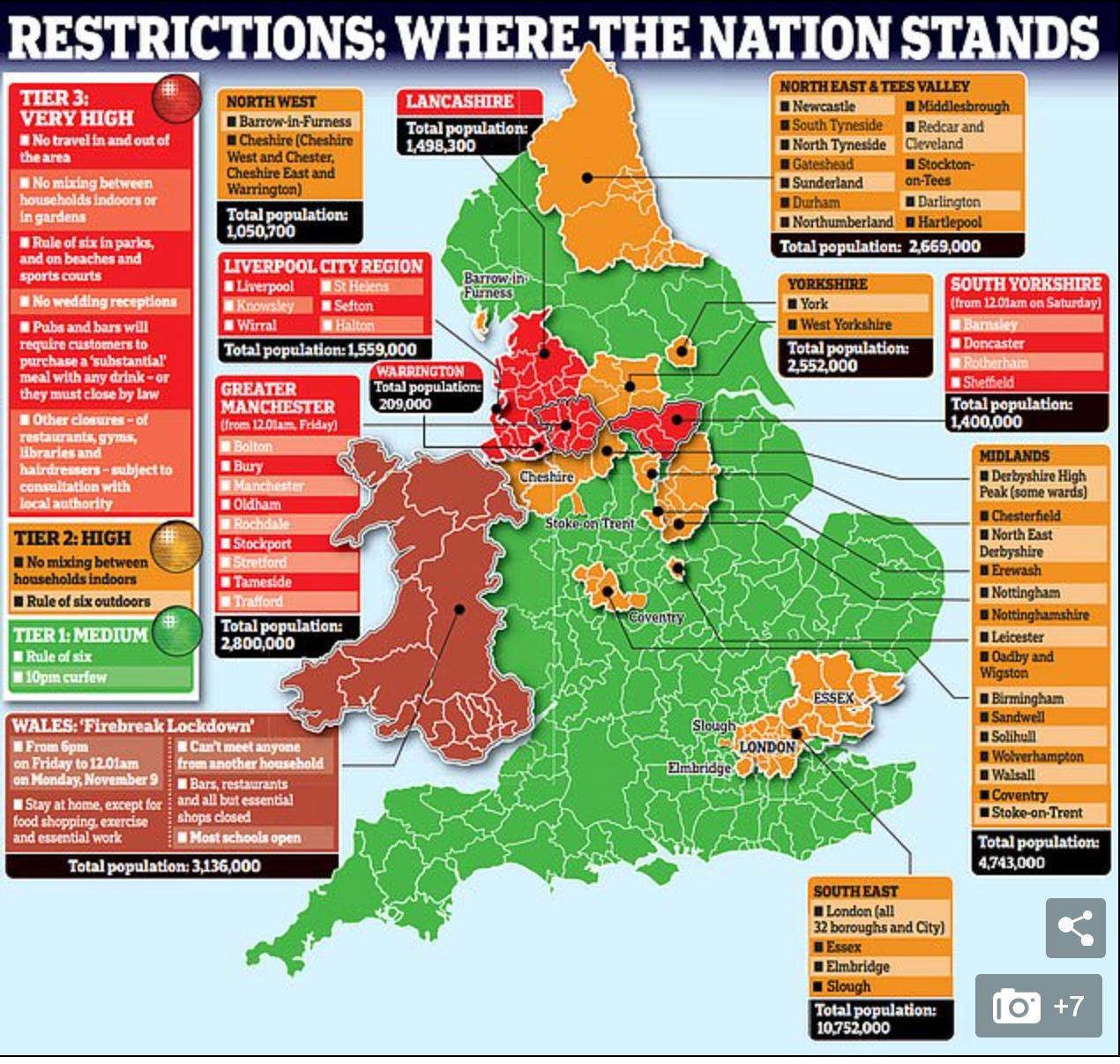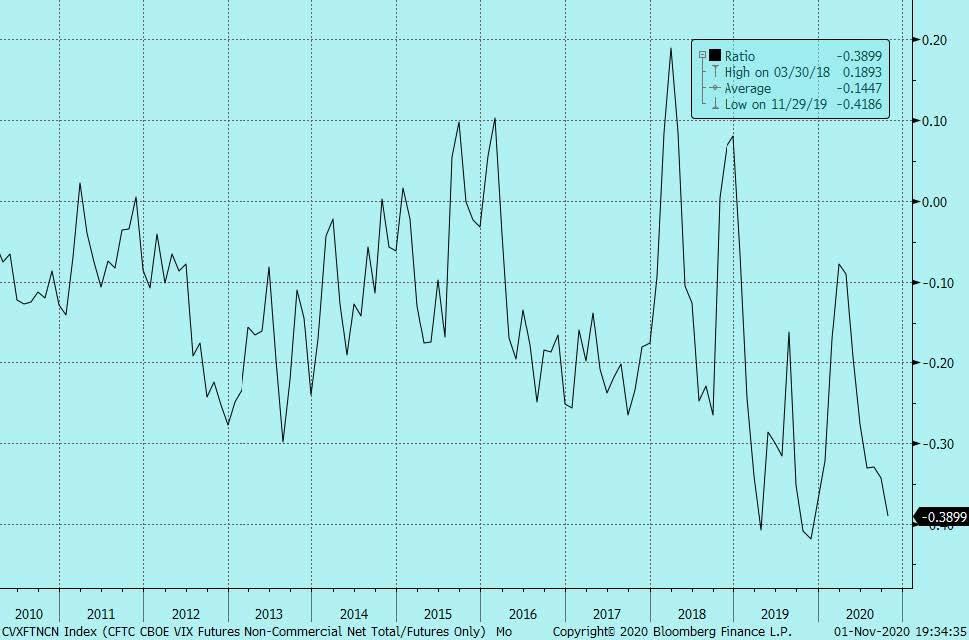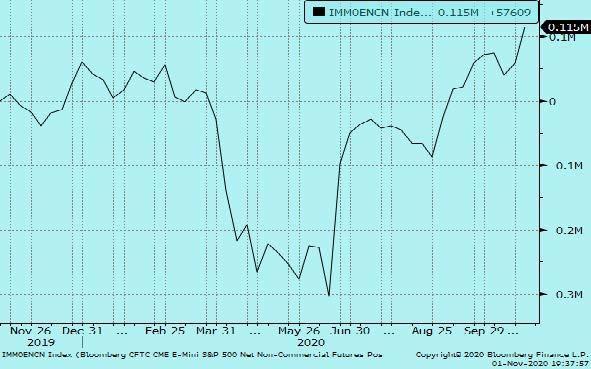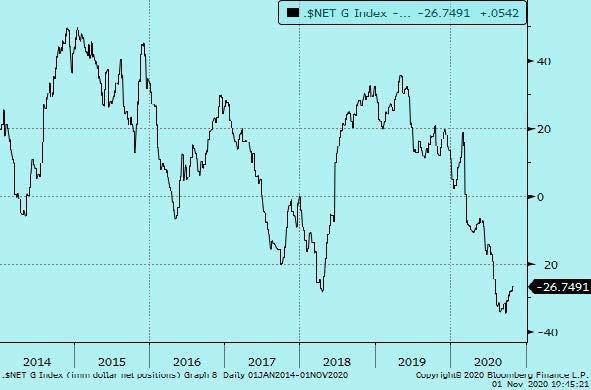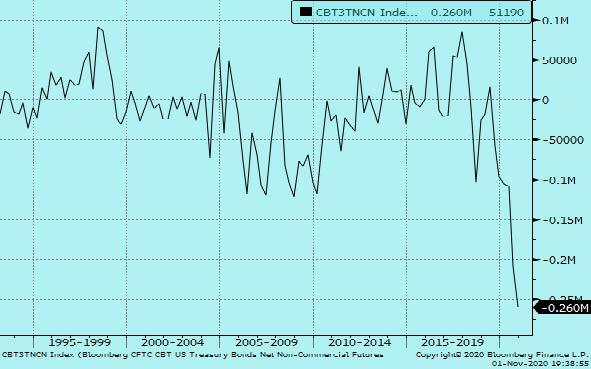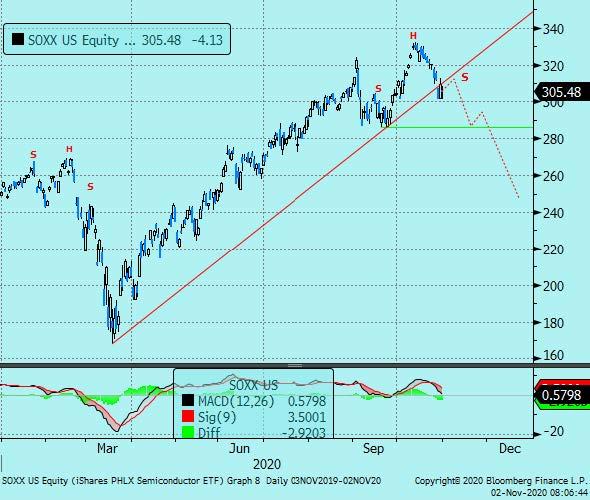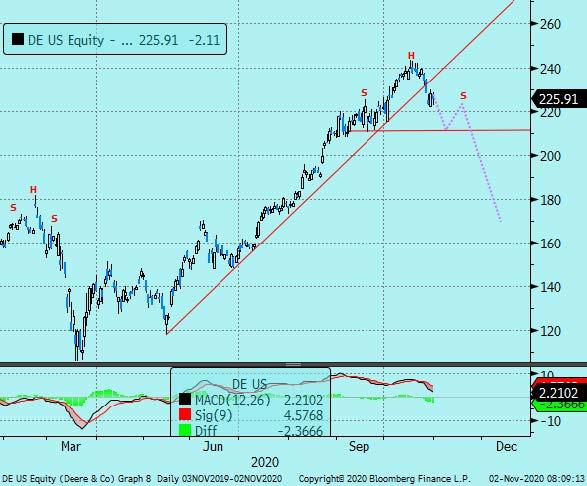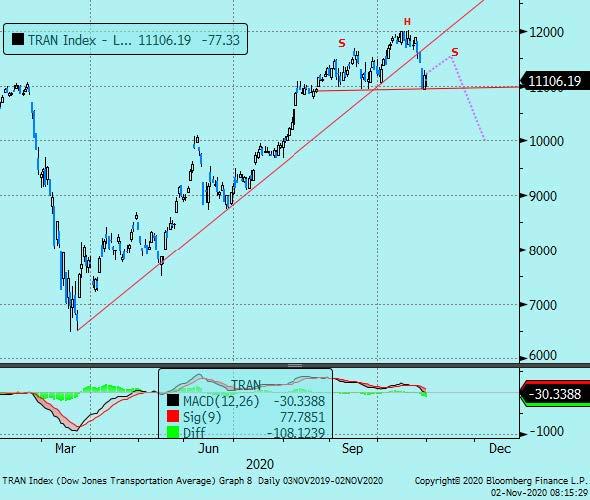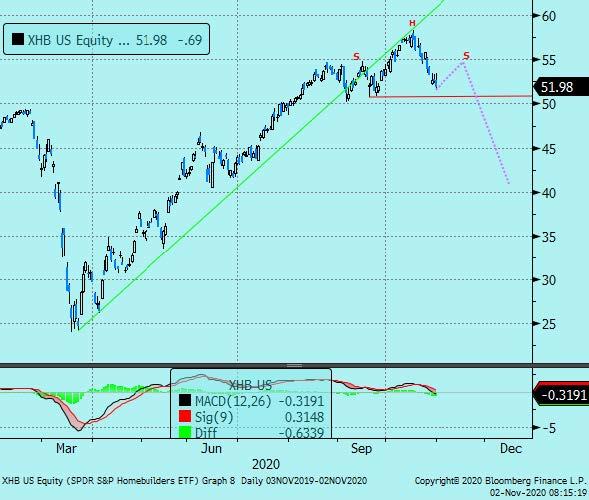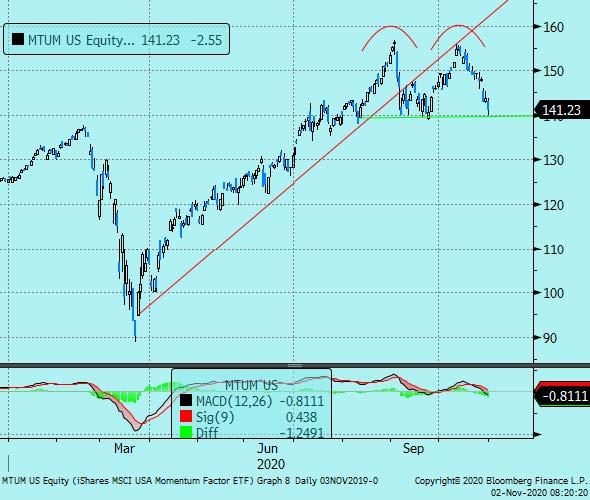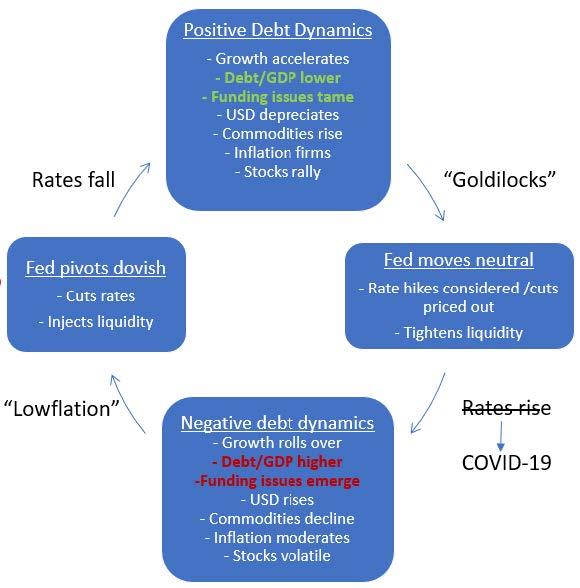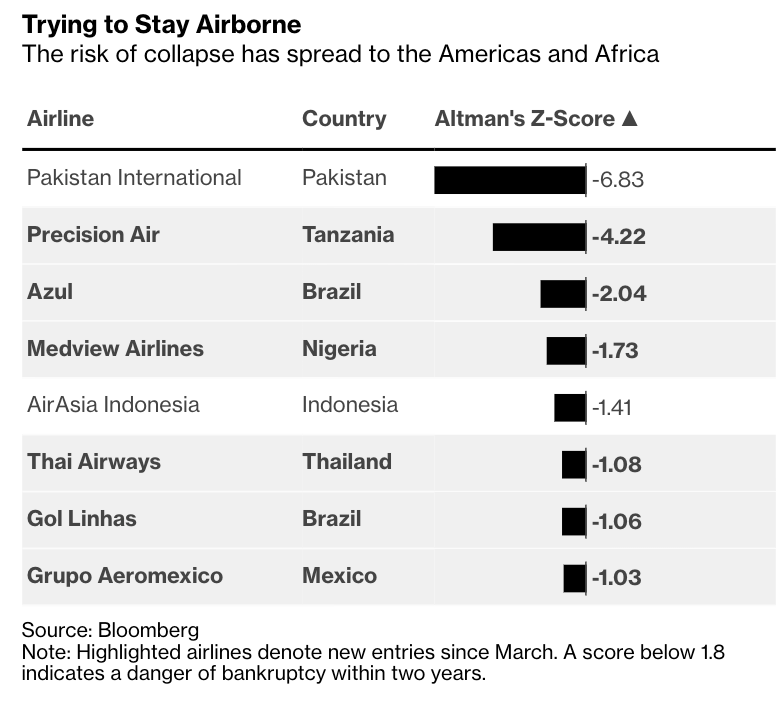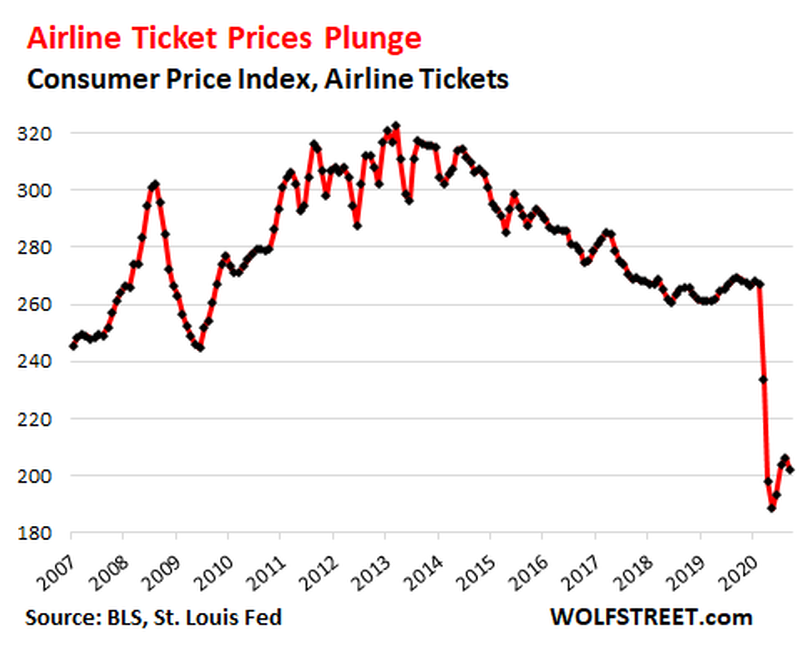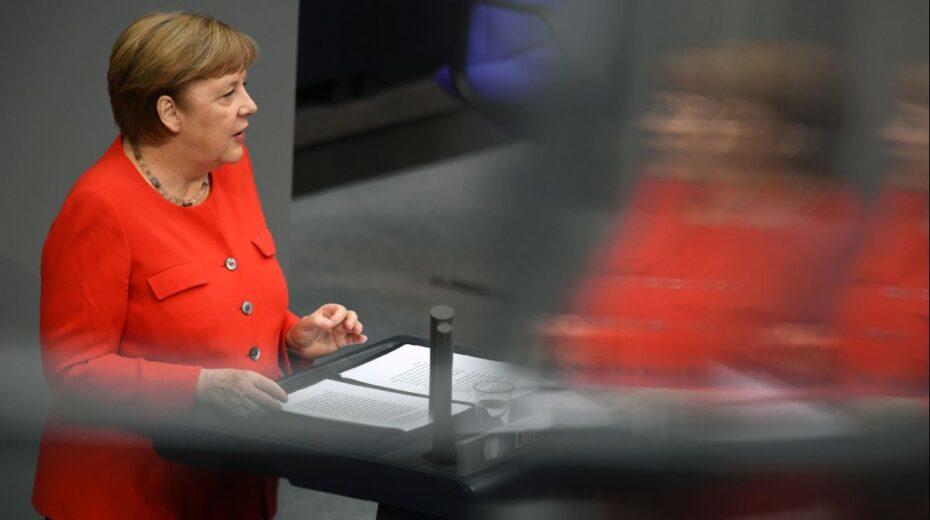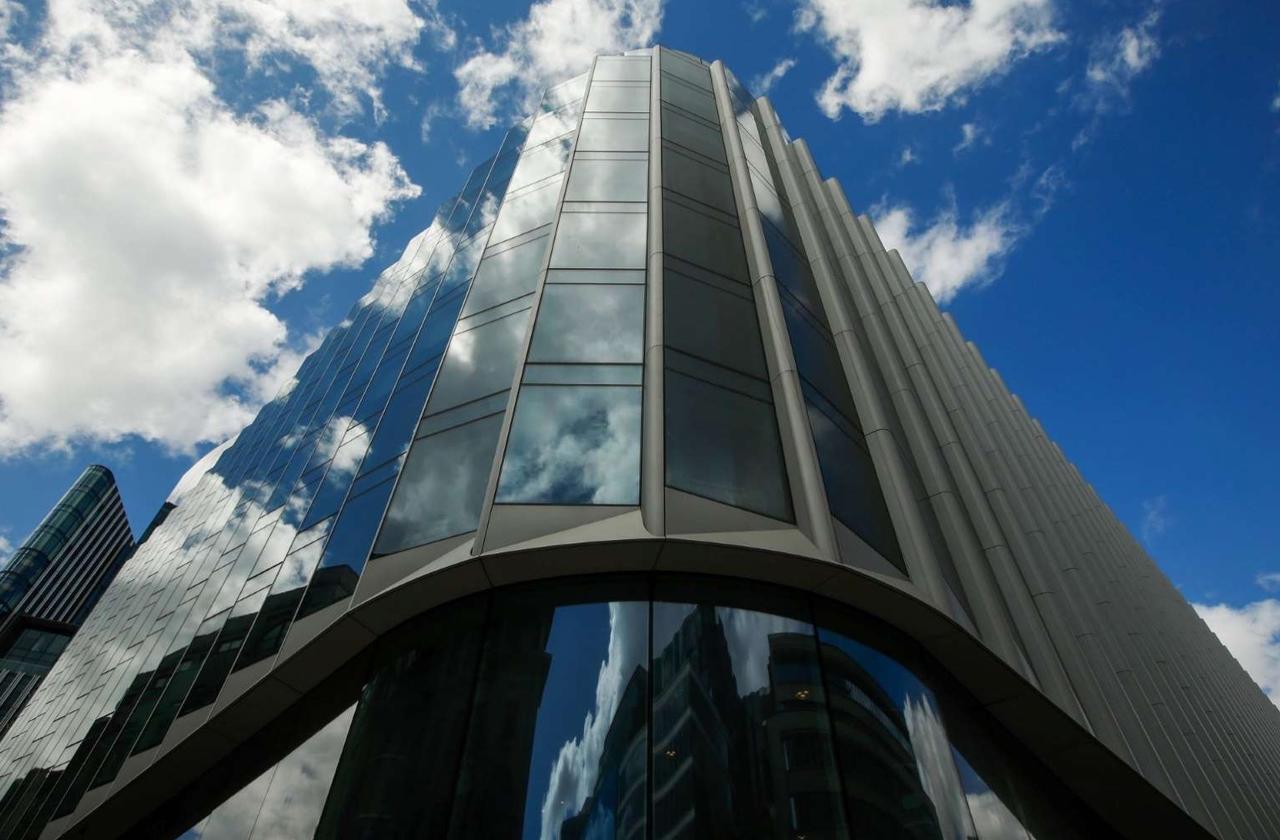
Last summer, when the short-lived “Capitol Hill Autonomous Zone” in Seattle renamed itself the “Capitol Hill Occupied Protest,” one protester explained to a reporter that the acronym CHOP was a tribute to the Reign of Terror in France more than 200 years ago. “What happened to the people who did not get on board with the French Revolution?” he asked, to which the assembled crowd responded, “CHOPPED!”
This scene was just one manifestation of the guillotine fad that has been sweeping America’s resurgent progressive left. #Guillotine2020 is an actual hashtag on lefty Twitter, mostly (if hyperbolically) dedicated to the malfeasance of Republicans, rich folks, and other baddies. DIY guillotines have been popping up at protests, including ones outside the White House and the Washington, D.C., mansion of Amazon CEO Jeff Bezos. Jacobin magazine, one of the radical left’s most prominent media outlets, has been selling a guillotine poster captioned “Some assembly required”—even though the publication claims its name is a reference to the Haitian Revolution and its “Black Jacobins,” not the French revolutionary faction that perpetrated the Terror in 1793–94.
So far, this revolutionary playacting has been more annoying than terrifying: Much like far-right memes about “helicopter rides,” a reference to extrajudicial executions via helicopter drop, it’s about trolling, not killing, the enemy. But it still signals an embrace of bloodthirsty rhetoric—and of ideological homage to one of history’s bloodier leftist dictatorships.
The new guillotine chic also speaks to the French Revolution’s enduring hold over our cultural imagination. The five-year period from the fall of the Bastille in July 1789 to the fall of the Jacobins in July 1794 has shaped our political language in more ways than we realize. It gave us the terms right and left in their political sense, based simply on the seating of deputies in France’s first National Assembly. It also gave us terror in its political sense, and with it the words terrorism and terrorist. It pioneered violent progressive utopianism and effectively birthed modern conservatism, via Edmund Burke’s Reflections on the Revolution in France. It even influenced fashions, pioneering short haircuts on women in tribute to guillotine victims—who had their hair shorn before execution—in the Terror’s aftermath. (Choker necklaces, apparently, have a similar origin.)
More important, the French Revolution has inspired radical movements for two centuries—notably Russia’s Bolsheviks, who explicitly claimed the Jacobins as their forefathers. Now, a resurgent American left has revived its romance not only with Soviet Communism (even “Uncle Joe” Stalin has a Twitter fan club!) but with Jacobinism—not a good sign for where modern progressivism is headed.
From today’s vantage point, the French Revolution may look like a distant costume drama mostly of interest to history buffs. But look closer, and its relevance to the current moment is striking—whether it’s the paranoid style, the sentimental idealization of the downtrodden, the quest to remake human nature and reset history, or the view that morality is determined by rank in an oppressor/oppressed hierarchy. (“How tenderly oppressors and how severely the oppressed are treated!” scoffed Jacobin leader Maximilien de Robespierre in response to those who deplored the Terror’s cruelty.) One can read a May 1793 letter to revolutionary legend Georges Danton from American citizen and French National Convention member Tom Paine deploring “the spirit of denunciation that now prevails” and think of parallels to current alarm about “cancel culture.”
The stakes in 1790s France, of course, were much higher. Less than a year after that letter was written, the two men met in the Luxembourg prison in Paris—Danton on his way to ultimate cancellation, Paine awaiting the same fate, which he would narrowly escape. But the echoes are undeniable.
Revolution
The French Revolution is often imagined as a broad, simple morality play: A decadent aristocracy and a tyrannical monarchy lord it over downtrodden peasants and commoners; Queen Marie Antoinette dismisses reports of the poor clamoring for bread with “Let them eat cake”; the people revolt and bring down the Bastille’s grim dungeons; royals and aristocrats go to the guillotine; revolutionary leaders become the new tyrants; eventually, they too meet their downfall.
The reality was much more complicated. As Tocqueville later argued in The Old Regime and the French Revolution, revolutions generally happen not when things are at their worst but when there is tangible progress—enough to raise expectations for a better future but not enough to meet those expectations. Toward the end of the 18th century, France was rapidly liberalizing—economically, socially, and politically. The new era was symbolized by Voltaire’s triumphant return to Paris in February 1778, shortly before his death, after 28 years of exile. Even the Bastille was already slated for demolition, and some of its former prisoners had published memoirs about their ordeal to celebrity acclaim. On the minus side, there was the constant crisis. The effects of droughts, poor harvests, and cattle disease were exacerbated by heavy taxes from which the aristocracy and the clergy were mostly exempt. The treasury was depleted not only by profligate spending and Louis XV’s imperial adventurism but by Louis XVI’s aid to America’s rebel colonists. (One underappreciated historical irony is that French involvement in the American Revolution, motivated by the desire to kneecap the British monarchy, helped fuel France’s own revolution—both by popularizing ideas of liberty and by driving the national debt through the roof.) The deregulation of markets spurred innovation but also increased economic insecurity, and fluctuations in the prices of basic goods were commonly blamed on the machinations of wicked speculators.
It’s hardly a stretch to see parallels to America’s present moment, in which turmoil follows several decades of unprecedented strides in civil rights for racial minorities, women, and gays—as well as the depressing reality of pandemic, debt (due in part to foreign wars), and widespread perception that ordinary people’s economic problems stem from being screwed by evil elites.
The clamor for reform and the urgent desire to raise taxes led to the king in May 1789 calling on the Estates-General, an assembly representing the three estates—clergy, aristocracy, and commoners—to compile grievances and make proposals. In June, the delegates of the commoners rebelled, chafing at their inadequate representation compared to the other two estates, and declared themselves a National Assembly representing the entire people. When Louis XVI tried to rein them in by shutting down the assembly hall on the pretext of carpentry work, the mutineers moved to a tennis court near Versailles, joined by most of the clergy’s deputies and by some of the nobles. The king caved.
The events of July 14, 1789—the “official” date of the revolution’s start—began as another episode in this ongoing conflict. On July 11, Louis XVI had fired the popular liberal finance minister Jacques Necker; many worried this was a prelude to a shutdown of the Assembly. The alarm was magnified because, fearing riots, the king had ordered troops into Paris, most of them Swiss and German mercenaries. This sparked quick-spreading rumors that the foreign soldiers were planning a massacre.
The Assembly’s armed supporters headed to the Bastille, wanting both to get their hands on the store of ammunition inside the fortress and to strike at a hated symbol of despotism. The rest is history. (In a weird historical footnote, those anti-Bastille passions may have been further inflamed by a troublesome inmate who was moved to an insane asylum a few days before the rebellion, but who until then had regularly shouted out the window, through an improvised megaphone, that the prisoners in the fortress were being slaughtered. It was the Marquis de Sade.)
In August, the Assembly abolished all feudal privileges, established full legal equality for all adult male citizens (the ladies would have to wait another century and a half), issued the Declaration of the Rights of Man and of the Citizen, and set about writing a Constitution. The monarchy limped along for three more years of push and pull between the increasingly radicalized revolutionaries and the resistant royals. Finally, in August 1792, insurgents invaded the Tuileries Palace, where the royal family had been forced to move from Versailles. The king and queen were placed under arrest. Shortly afterward, the National Convention—having been elected to replace the Assembly—formally abolished the monarchy. (Louis the XVI, henceforth known as Citizen Louis Capet after the medieval French dynasty to which he actually wasn’t related, would be guillotined for treason in January of the following year; Marie Antoinette, or “the widow Capet,” in October.)
September 22, the birthday of the French Republic, would become the first day of Year One in the new revolutionary calendar, which also replaced the old months with new metric-based ones named after nature’s cycles (Thermidor for heat, Germinal for germination, etc.). This dramatic move predated the “Year Zero” of the Khmer Rouge by nearly 200 years—and anticipated the mindset of many American progressives, who, though they may not want to literally reset time, do want to cancel America’s slaveholding Founders.
It was not even Year Two before things got to the point summed up in a famous phrase, apparently first uttered in March 1793 by Convention member Pierre Vergniaud: “Like Saturn, the Revolution devours its own children.” (“The left eating its own”—a phrase often applied these days to purges of alleged racists, misogynists, or transphobes—is a tradition that began as soon as there was a left.)
Two months after Vergniaud spoke those prophetic words, an angry mob organized by Jacobin radicals invaded the Convention to force his expulsion and that of his fellow Girondins, an informal bloc of moderates who mostly hailed from the southern Gironde region. Two years earlier, the Girondins had been the Assembly’s center-left. Now they were the conservatives, hated by Paris militants for rejecting price controls amid a food shortage and for having waffled on the execution of the former king. Power was now in the hands of the hardcore Jacobins (named after their club’s location in the Rue St. Jacques, or St. Jacob Street).
From late July, Robespierre and two close allies, Georges Couthon and Louis-Antoine de Saint-Just, were in full control of the 12-member Committee of Public Safety. Twenty-two Girondins were executed in October 1793, among them the journalist Jacques Pierre Brissot, a onetime prisoner of the Bastille and founder of continental Europe’s first anti-slavery society, Les Amis des Noirs (“The Friends of Blacks”). Other Girondins who had fled Paris were killed or committed suicide while on the run.
Casualties of the anti-Girondin purge included the pioneering feminist and abolitionist Olympe de Gouges, who had penned a bold Declaration of the Rights of Woman and of the Female Citizen. Paine, a Girondin ally who had argued for sparing the former king’s life in recognition of his assistance to the American Revolution, was also arrested.
By the time the Girondins met their deaths, the revolution had reached its bloodiest phase, known as the Reign of Terror. The Law of Suspects, passed in September 1793, gave local revolutionary committees the power to arrest anyone who “by their conduct, relations or language spoken or written have shown themselves partisans of tyranny or federalism”—i.e., greater regional autonomy—”and enemies of liberty.” At least 200,000 people were arrested around the country; some 17,000 were guillotined, and about 10,000 died in prison. That doesn’t include the tens, possibly hundreds, of thousands massacred in rebellious provinces, especially the Vendée, where some historians believe reprisals were nothing short of a genocide—if that term can be applied to extermination directed at the population of a region, rather than an ethnicity or religion.
In Nantes, suspected counterrevolutionaries, many of them priests, monks, and nuns, were tied up and loaded on barges that were then sunk in the Loire River. In Lyon, the condemned were slaughtered first by cannon grapeshot blasts—which often left mangled, still-living bodies to be finished off with sabers or pistols—and then by more conventional firing squads. Even Robespierre thought that was a bit much and recalled the commissars in charge, Jean-Baptiste Carrier and Joseph Fouché. (Those two, sensing peril to their own necks, would eventually help engineer the anti-Robespierre coup that ended the Terror. Carrier still went to the guillotine. Fouché, the revolution’s ultimate survivor, later served as chief of police under Napoleon and, briefly, under the restored Bourbon monarchy.)
In spring 1794, purges began within the Jacobin ranks. First fell the ultraradicals, known as les Enragés (“the Rabid”), and their ringleader, Jacques René Hébert, who wanted more terror, more de-Christianization, and more war on the rich. Robespierre despised the Hébertistes as amoral atheists with no respect for property or propriety. Their sworn enemies, “the Indulgents,” led by Danton and Camille Desmoulins—onetime radical icons who now wanted a Committee of Clemency to review the cases of detainees—followed in less than two weeks. Desmoulins, whose fiery speech in a Paris café had helped launch the attack on the Bastille, shouted himself hoarse on his final journey, in the frantic hope that he could rouse the people to defend their tribunes. Danton, resigned to his fate, at one point reportedly bellowed, “You’ll follow me soon, Robespierre!” (Narrator: He did.)
Desmoulins, whose famous September 1789 pamphlet, The Lamppost’s Speech to Parisians, excused the summary mob executions of several “enemies” after the fall of the Bastille, was one of the many revolutionaries who discovered the hard way that cheerleading for violence has consequences. (To his credit, Desmoulins shrank back from those consequences before they affected him directly: He was shaken by the lynching of royalist pamphleteer François-Louis Suleau, his ideological adversary and ex–school friend, in August 1792 and was consumed by guilt after the execution of the Girondins, whom he had viciously trashed in a pamphlet.)
Hébert was another. A prototypical “dirtbag leftist” who had ridiculed Terror victims in obscene tirades spiced up with witty euphemisms like “the national razor,” “playing the hot hand,” and “looking through the republican window,” he showed far less fortitude than his targets when it was his turn. (“We thought he’d have more courage, but he died like a fucker,” observed one of the jeering spectators, according to a government agent’s report.) In a Hollywood-worthy postscript, the two men’s widows, Lucile Desmoulins and Marie Hébert, were promptly arrested for a nonexistent plot. They bonded in prison and went to the guillotine together a few days after Danton and Desmoulins.
As summer rolled around, the carnage accelerated—especially after the passage of the Prairial Law, which created a broad new range of vaguely defined counterrevolutionary crimes (such as “slandering patriotism” or seeking to “weaken the purity and energy of revolutionary principles”). Defendants before the Revolutionary Tribunal were no longer allowed to have counsel or call witnesses; jurors were to render verdicts based on their “moral sense,” and the only options were death or acquittal. In about four out of five cases, they chose death.
The guillotine’s toll in Paris spiked from an average of six people a day to an average of 27. The executions were becoming unpopular with the crowds, especially after an 18-year-old working-class girl’s attempt to confront “the tyrant” Robespierre while allegedly carrying two small knives was blown up into an assassination plot for which 53 people were guillotined en masse. The purported conspirators killed that day included a wailing mother with her teenage son and daughter and a young housemaid who looked about 14.
Meanwhile, an actual plot against Robespierre was being hatched within the Convention, spurred by whispers of another big purge coming any day. (The Prairial Law had stripped deputies of immunity, allowing their arrest without impeachment by their colleagues. The Convention had tried to reverse this provision, but Robespierre and Couthon jammed it through.) On July 27—9 Thermidor in the new calendar—a pre-planned mutiny erupted in the Convention, with Robespierre denounced as a tyrant and a murderer. The session ended with the arrest of Robespierre, Saint-Just, and Couthon.
Freed by their supporters and holed up at Paris City Hall, the Hôtel de Ville, Robespierre and his companions hoped that the masses would rise in their defense. But the masses were done with the Jacobins, not only because of the Terror but because of continuing privations: The price controls, or “maximum,” had extended from bread to numerous other goods, leading to rampant shortages and wage freezes. (When the Robespierristes rode the tumbrils to their doom the next day, hecklers in the crowds shouted, “Foutu maximum!“—”Fucking maximum!”)
Troops loyal to the Convention quickly retook the Hôtel de Ville. On 10 Thermidor, Robespierre—his bandaged jaw shattered by a bullet, perhaps from a botched suicide, perhaps from a soldier’s shot—faced the Revolutionary Tribunal with Saint-Just, Couthon, and 19 others. The death sentence was swift.
The new rulers, most of whom were themselves radical Jacobins, had no intention of adopting a more moderate course. While the mass executions stopped, most political prisoners were not released until months later. But the backlash against Jacobin rule had acquired its own momentum. The Reign of Terror was over, and the exhausted Republic descended into a disarray from which, eventually, Napoleon would emerge.
Destruction
Why did the French Revolution go so dramatically wrong?
Burke, who supported the American colonists but took an implacably negative view of the French Revolution early on, argued that while the American cause was rooted in the traditional liberties of Englishmen, the French one championed the abstract, universal, and therefore inherently unworkable “Rights of Man.” But this is a dubious distinction: The Declaration of Independence is just as steeped in liberal universalism as is the Declaration of the Rights of Man, and the Constitution and the Bill of Rights were hardly less radical in sweeping away traditional hierarchies.
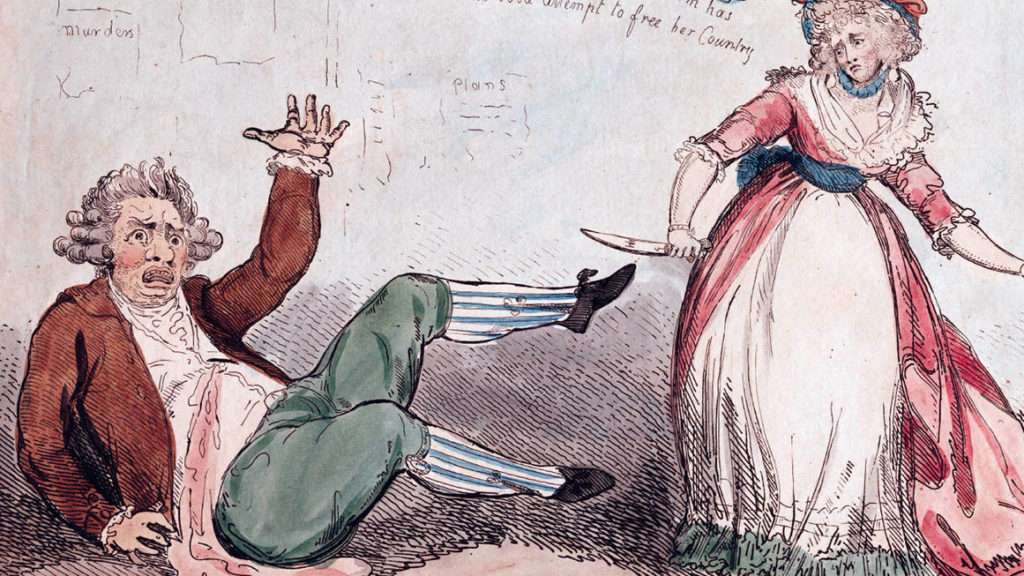 But Burke’s disapproval was also driven by the French revolutionaries’ embrace of mob violence, and in that he was much closer to the mark. The revolution’s first acts of barbarism happened on its very first official day. After the Bastille’s surrender, its commandant, Bernard-René Jourdan de Launay, was hacked to death while being led to the Hôtel de Ville; the superintendent of the Paris markets, Jacques de Flesselles—accused of “treason” because the information he gave the insurrectionists about where to get weapons turned out to be wrong—was shot to death on the building’s front steps; and the two men’s severed heads were paraded around on pikes. A few days later, two other officials, Joseph Foullon and Louis Bertier de Sauvigny, accused by the Paris rumor mill of plotting to cause a famine, were dragged from their homes, viciously beaten, and hanged from lampposts.
But Burke’s disapproval was also driven by the French revolutionaries’ embrace of mob violence, and in that he was much closer to the mark. The revolution’s first acts of barbarism happened on its very first official day. After the Bastille’s surrender, its commandant, Bernard-René Jourdan de Launay, was hacked to death while being led to the Hôtel de Ville; the superintendent of the Paris markets, Jacques de Flesselles—accused of “treason” because the information he gave the insurrectionists about where to get weapons turned out to be wrong—was shot to death on the building’s front steps; and the two men’s severed heads were paraded around on pikes. A few days later, two other officials, Joseph Foullon and Louis Bertier de Sauvigny, accused by the Paris rumor mill of plotting to cause a famine, were dragged from their homes, viciously beaten, and hanged from lampposts.
Perhaps worse than the violence itself was many respectable revolutionaries’ willingness to condone it or explain it away as justifiable anger. After some Assembly members voiced dismay at the lynchings, Antoine Barnave, a lawyer and orator, rebuked his “tender-hearted” colleagues: “Was this blood, then, so pure that one dare not spill it?” (Later, Barnave himself would join the ranks of the “tender-hearted.” His story ends exactly the way one would guess.)
This creepy notion of “impure” enemy blood had a lot of currency. It even made it into the lyrics of “The Marseillaise,” whose refrain ends: “March on, march on, that blood impure/Our fields may irrigate.” From there, it’s only a short step to viewing the counterrevolutionary as Untermensch.
From early on, some of the radicals were openly calling for large-scale bloodshed. In 1790, Jean-Paul Marat, later a Jacobin cult figure, wrote that at one point “five or six hundred heads would have been enough” to save the country, but because the enemy had been given time to plot it would now take five or six thousand. “But even if it need twenty thousand, there is no time for hesitation,” he concluded. Later, Marat reportedly upped the score to 200,000. (He did not live to see the Terror’s peak: In July 1793, a 24-year-old Girondin sympathizer named Charlotte Corday, armed with a large bread knife and with her own ideas of republican heroics, turned the same calculus on Marat himself—later telling her judges that she “killed one man to save 100,000.”)
In Citizens: A Chronicle of the French Revolution, his 1989 history, Simon Schama claimed that “the Terror was merely 1789 with a higher body count.” That has been vigorously debated, but there is certainly a sense in which the revolution’s logic led to what came next. The lynchings of 1789 escalated to mass murder in 1792, when some 1,500 prisoners held in the Paris jails were butchered over three days in the notorious September massacres. The Revolutionary Tribunal was founded in response to these events, ostensibly in the hope of making such extralegal excesses unnecessary by dealing swift and harsh justice—but with procedural safeguards—to the Revolution’s enemies. We know how that worked out.
To some extent, the different fortunes of the American and French Revolutions were the product of the two countries’ very different circumstances. For Americans, King George was across the ocean, and the royal administrators the rebellious colonists had denounced as corrupt usurpers of their liberties were as well. For the French, the monarch and his minions were right there in their midst—and hostile European monarchies were just across the border.
The paranoia that spurred revolutionary violence in France was often directly related either to the threat of war or to actual wartime conditions; thus, the frenzy driving the September massacres was whipped up by rumors that the prisoners were in cahoots with the invading forces of the Austrian-Prussian alliance. It should be noted that France was hardly the victim of one-sided foreign aggression: That invasion itself was a response to France’s declaration of war on Austria in April 1792, a move the revolutionaries saw both as a preemptive strike and as a patriotic endeavor that would unify France and export la liberté to other countries. In one of the Revolution’s many tragic ironies, the war’s biggest cheerleaders were the Girondins, later victims of a radicalization partly driven by the war.
Obviously, American independence was forged in war, and there was no shortage of wartime paranoia on these shores, either. (There was also more violence between Loyalists and Patriots than our narratives often recognize.) But by the time Americans were building their system of government, the nascent republic faced no serious external threat—a very different situation from France.
Religion was another factor. America had a history of pluralism and had no dominant church; in France, the revolutionaries ostensibly embraced religious tolerance, but they were also taking on the Catholic Church as a powerful and oppressive institution. A law passed in 1790 on the “Civil Constitution of the Clergy” required priests to swear allegiance to the state and to be elected; it also banned monastic life. Priests refusing to take the oath were subject to increasingly brutal persecution, as were nuns who continued to wear the habits or to maintain secret religious communities (including the “Martyrs of Compiègne,” 16 nuns and lay sisters guillotined in July 1794 and immortalized in Francis Poulenc’s opera Dialogues of the Carmelites). The anti-Christian persecution, which included rampant pillaging and desecration of churches, exacerbated civil conflicts and alienated peasants. It also placed the revolution on the side of religious repression rather than religious liberty.
Add to this the anti-market animus. The Jacobins were not socialists; their ideal citizen was the self-employed artisan or vendor. But Schama convincingly argues that they were anti-capitalist, insofar as they saw wealth as morally suspect and commerce as corrupt; their confiscatory “revolutionary taxes” on the rich reflected not only wartime necessity but hatred of what modern-day revolutionaries would call “the 1 percent.”
There was, finally, a fundamental difference between the French idea of liberty and the American one. In the Declaration of Independence and the Constitution, power flows from the people to the state. In the Declaration of the Rights of Man, “the principle of any sovereignty resides essentially in the Nation,” a superentity that figures prominently in French revolutionary rhetoric. (A few years later, one early political theorist of the Revolution, Emmanuel-Joseph Sieyès, would argue that the sacralization of “popular sovereignty” was an essentially “royalist” idea, “a conception destructive of liberty.”) The French Declaration also states that “the law is the expression of the general will,” invoking the dangerously fuzzy, quasi-mystical, Rousseauist notion of a political hive mind.
Partly because of this outlook, French republicanism never developed a strong commitment to the separation of powers. The Declaration of the Rights of Man mentions it as essential to legitimate government (perhaps reflecting Thomas Jefferson’s input). But once the old executive branch was quite literally decapitated, it was never replaced. And the Constitution of 1793 entrusted judicial review to a Court of Appeals whose members were to be appointed annually by the legislative body. The principle of checks and balances did not mesh with the ideal of national unity.
Rousseauist patriotic mysticism reached its height during the rule of the Jacobins, whose ideology was a mix of sentimentalism, puritanism, and death cult. The Terror may have started out as a practical (or paranoid) response to danger, or as an attempt to channel popular vengeance into a regulated outlet. But it eventually became its own raison d’être: an ideological/spiritual cleansing, a sacrificial shedding of “impure blood.” It was, the Swiss historian Siegfried Weichlein writes in the 2011 book Terrorism and Narrative Practice, “part of a vision for a new society and a new man”—one founded on “virtue, which was to be achieved by terror.”
No one exemplified this mentality more than Robespierre, the archetypal homicidal idealist who had started his career as a staunch opponent of capital punishment. (Memoirist and Terror survivor Aimée de Coigny summed him up in a pithy line in her diary: “Monsieur de Robespierre may have loved the people, humanity, etc., but he did not like men very much, and women not at all.”)
Robespierre’s grand vision was laid out in a February 1794 speech to the Convention titled “The Principles of Political Morality.” The goal of the Republic, he declared, was to fulfill the true human potential that tyranny had warped: Selfishness, frivolity, greed, sensuality, vanity, and social graces would give way to magnanimity, wisdom, reason, and love of goodness, truth, and glory, ushering in “the dawn of the bright day of universal happiness.” Until then, “the despotism of liberty against tyranny” would have to do: “If the spring of popular government in time of peace is virtue, the springs of popular government in revolution are at once virtue and terror. Virtue without terror is fatal; terror without virtue is powerless. Terror is nothing other than justice: prompt, severe, inflexible. It is therefore an emanation of virtue.” Talk of mercy, Robespierre stressed, was dangerously misguided: “To punish the oppressors of humanity is clemency; to forgive them is cruelty.”
Meanwhile, Saint-Just made it clear that the reach of virtuous terror would be very wide: “There is no prosperity to hope for as long as the last enemy of liberty breathes. You have to punish not only the traitors, but even those who are indifferent; you have to punish whoever is passive in the republic, and who does nothing for it.” And, chillingly: “What constitutes a republic is the total destruction of everything that stands opposed to it.”
While the Reign of Terror certainly wasn’t bloodier or more brutal than many earlier episodes of organized violence and repression in European history, it was the first in which people were systematically murdered in the name of a progressive vision, complete with Robespierre’s Orwellian flourishes about the despotism of liberty and the cruelty of mercy. Assessing the French Revolution in 1955, the Israeli historian Jacob Talmon called Jacobinism an experiment in “totalitarian democracy.” The term “totalitarianism” would not come into existence until the 1930s, but in 1795, on the heels of the Reign of Terror, Sieyès uncannily warned that a republic that demanded total devotion from its citizens was no longer a “re-publique” (“common matter”) but a “re-totale.”
Inspiration
The Soviets saw the Jacobins as their forerunners, despite the French rebels’ attachment to deism and private property. Vladimir Lenin referred to Robespierre as a “Bolshevik avant la lettre“; the Russian’s first decree on “monumental propaganda” in April 1918 included Robespierre on the list of 12 great revolutionaries whose statues were to be erected by the October Revolution’s first anniversary. The monument was unveiled on November 3 in a major Moscow park, where a visiting French communist hailed Robespierre as an “honest and devoted revolutionary” slandered by the bourgeoisie.
Three days later, the concrete statue collapsed into a pile of rubble. Some blamed foul play, but the more likely explanation was shoddy construction.
While the Robespierre monument was never rebuilt and a proposed monument to Marat did not happen, the Soviets honored the Jacobins in plenty of other ways. There were Robespierre Streets and Marat Streets in several cities, including Leningrad and Gorky. Later, the Soviet biography series Fiery Revolutionaries, intended for a general audience and especially for young adults, featured the lives of Robespierre, Marat, Saint-Just, and even Danton, though the latter was chided for turning to “counterrevolution” at the end of his life.
In 20th century French historiography, debates about the French Revolution were often a battleground for clashes between pro-Jacobin Marxists such as Albert Soboul and anti-Jacobin liberals such as François Furet—who also argued that treating the Jacobins as a proxy for Bolsheviks was reductive and misleading.
It would certainly be misleading to treat the French Revolution as a mirror for 21st century American politics. Apparent similarities can be deceptive. For instance, when the revolutionaries of 1789 assailed “privileges,” including ones many of them personally possessed, they were talking about very specific legal advantages that could be (and eventually were) abolished by the stroke of a pen. Today, the concept of “privilege” employed by progressives refers to a far more complex and elusive system of benefits.
And yet reading about those events of more than 200 years ago, one cannot help being struck by parallels. The 18th century was its own Information Age, with unprecedented access to media, thanks to strides in printing technology that enabled mass production of cheap newspapers and pamphlets. It was also an era of rapid shifts in social norms. Pre-revolutionary France was plagued by incompetent leadership and polarized between a deeply religious rural population and secularized urbanites. A large portion of its elites flaunted their egalitarian ideas without any intention of giving up their status.
A more disturbing shock of recognition is provided by the key role of paranoid rumors and conspiracy theories in the French Revolution’s events (though, in fairness, paranoia in times of crisis is hardly unique to the French Revolution). In those pre-internet days, rumors—of impending massacres and assassinations, “famine plots,” bandits sent to torch villages—took longer to travel, but a mass panic known as La Grande Peur, or “the Great Fear,” still managed to go viral in the French countryside in July and August 1789, sparking unrest that hastened the abolition of landlord privileges. Social media may not have existed, but a bedraggled man who galloped down the road screaming that armed thugs were burning, raping, and slaughtering in the next village would do just as well—and who needs out-of-context videos when a herd of cows can be mistaken for bandits on the move?
Revolutionary Paris, too, always seemed to be lurching from panic to panic. “Then, the phantom enemy was on the right (those secret gangs waiting to cut the throats of supporters of the National Assembly),” Schama tells me. “The politics are reversed now, with the phantom Satanists, Antifa, etc., conjured up to arm the ultra-right.” But today’s left has its own paranoid tales, starring an assortment of Russians, bots, and missing mailboxes.
And even without guillotines, observers of the American left in 2020 will see themes reminiscent of the French radicals of the 1790s—from the romanticization of the violent mob to the sentimental belief in the fundamental innocence of the oppressed to the speed with which yesterday’s heroes can become today’s reactionaries. Substitute “progressive” for “republican,” and Schama’s description of the Jacobins rings true today: “They remained obsessed by the holy grail of republican purity. Since it would, by definition, remain forever out of reach, its paladins would constantly see themselves confronted by impure soldiers of darkness and crime who stood between them and their prize and who had to be cut down if the Reign of Virtue were ever to be realized.” Saint-Just’s declaration that indifference equals treason is echoed today in the rhetoric of activists like Ibram X. Kendi, who says that it’s not enough to simply not be racist; if you’re not actively anti-racist—an ally in their cause—then you’re complicit in white supremacy.
This doesn’t mean that social justice activists, or even the guillotine-toting revolutionary wannabes in Portland and D.C., are Saint-Justs and Robespierres in waiting. But the Jacobins’ story should be a timely reminder of the dangers of romanticizing righteous violence, demonizing enemies, and fetishizing ideological purity.
from Latest – Reason.com https://ift.tt/34SClub
via IFTTT
